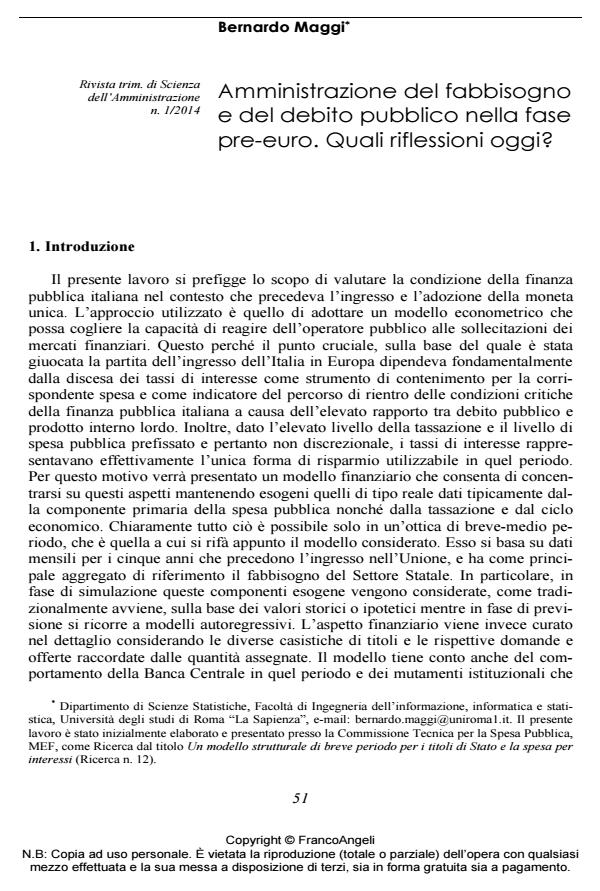Deficit and public debt management before joining the EMU, which considerations today?
Journal title RIVISTA TRIMESTRALE DI SCIENZA DELL’AMMINISTRAZIONE
Author/s Bernardo Maggi
Publishing Year 2014 Issue 2014/1
Language Italian Pages 43 P. 51-93 File size 1119 KB
DOI 10.3280/SA2014-001003
DOI is like a bar code for intellectual property: to have more infomation
click here
Below, you can see the article first page
If you want to buy this article in PDF format, you can do it, following the instructions to buy download credits

FrancoAngeli is member of Publishers International Linking Association, Inc (PILA), a not-for-profit association which run the CrossRef service enabling links to and from online scholarly content.
In this paper we focus on how the necessities from the public sector borrowing requirement are managed in the Government securities markets. We consider in detail the interaction between the demand and supply schedules and, within this context, the role of economic agents and institutions. The interest in the pre-union period is in the analysis of the reasons that made feasible decreasing levels of new issuances as well as interest expenses out of GDP. In particular, after the estimation of a complete interactive structural model, we carry out simulations experiments to highlight the tendencies according to the structure that was operative in the pre-euro phase. Importantly, the results we derive are helpful to asses also on the current structure underlying the debt management and the balance of the public sector.
Keywords: Public policy issuance management, public sector borrowing requirements, government bonds market, structural simultaneous equations estimation
Bernardo Maggi, Amministrazione del fabbisogno e del debito pubblico nella fase pre-euro. Quali riflessioni oggi? in "RIVISTA TRIMESTRALE DI SCIENZA DELL’AMMINISTRAZIONE" 1/2014, pp 51-93, DOI: 10.3280/SA2014-001003